Clearwire has been offering 4G hotspots for use with its WiMax network for a while—often teaming up with operators like Time Warner and Sprint—but now the company is looking to tap into the legions of folks using Apple mobile devices. Clearwire’s new iSpot offers 4G WiMax connectivity for up to eight WiFi-enabled Apple devices like iPads, iPhones, and the iPod touch, all for a no-contract, flat-rate $25-per-month access charge. And unlike AT&T’s iPhone data plans, Clear’s WiMax access does not have a usage cap.Now you can see the preview….
Lately, the notion of getting Apple’s ever-growing line of mobile devices connected to 3G and 4G networks is attracting a lot of attention from carriers that aren’t AT&T — take Sprint’s Overdrive case for the iPad, for instance but not in a million years did we think Clear would go so far as to create a mobile hotspot designed exclusively for them. In some ways, that’s taking respect for the Apple ecosystem to a whole new level. Of course, even the most die-hard Apple fanatics probably own a WiFi-capable device or three that doesn’t hail from Cupertino, so the usefulness of Clear’s iSpot is definitely limited by design, of course. In exchange for the gimping, you pay just $25 a month for unlimited, blazingly fast WiMAX data with no contract, which is insanely cheap by modern standards especially in an era when many carriers are moving to data caps.
“With the iSpot, Apple customers don’t have to sort through confusing service plans with overage fees, nor do they have to worry about how much data they’re using,” said Clearwire senior VP of marketing Thomas Enraght-Moony, in a statement. “Instead, with Clear, customers can run all of their Apple mobile devices at true broadband speeds for a single, simple monthly fee.”
The iSpot itself costs $99.99, which is on par with the Clear Spot 4G and less expensive than the Clear Spot 4G+ (which drops to 3G if WiMax service isn’t available) for $224.99. However, the Clear iSpot is restricted to devices running Apple’s iOS: while that does mean users can stream Netflix to their iPads, use Skype on their iPhones, and engage in a number of other compelling activities, they won’t be able to use the device with PCs, notebooks, or even Apple Macintosh computers. However, some reports have Clear willing to unlock the iSpot and let other devices connect to the WiMax network…although that will entail upgrading to the standard $40/month Clear Spot 4G plan.
Physically, the iSpot is a dead ringer for Clear’s previously-introduced Spot 4G, except this one’s glossy white plastic instead of black (of course, Clear would’ve made this thing out of aluminum if they were shooting for an up-to-date Apple industrial design cliche, but we digress). It’s an imposing hotspot — quite a bit larger than the Novatel MiFi, though it’s still no bigger or heavier than your average smartphone, so it’s easily concealed in a pocket or a laptop bag. A rounded, pebble-like shape makes it easy and comfortable to hold in the hand, though you really don’t have any reason to hold it while you’re using it you’ll either have it stored on your person or it’ll be sitting on a table, most likely.
Speaking of “imposing,” there’s a great reason for the iSpot’s size: it’s got an almost comically large, removable 2700mAh lithium ion battery beneath that pale skin. 4G networks aren’t exactly easy on the juice, so it’s a must-have — and in our testing, the giant pack more or less pays off: we were able to get close to five hours of use, more than Clear’s quoted four hours (granted, we were in nearly perfect reception here in Chicago most of the time). That’s not bad. Granted, we were expecting more considering that we got over three hours from the EVO 4G which, on top of only having a 1500mAh battery, is doing much more than simply being a mobile hotspot but for your average use case, four-plus hours is plenty, particularly if you’re careful to turn it off when you’re not using it. Interestingly, the iSpot lets you configure the strength of the WiFi signal to conserve battery life if you don’t need much range; the default is the lowest-power mode, and that’s what we used for our testing. If you have a clear line of sight, you can use this mode and place the iSpot anywhere in a room.
Clear specifically calls out the iPod touch, iPhone, and iPad as the devices it expects you to use with the iSpot, and they’re really easy to pair — if you’re familiar with other mobile hotspots like the MiFi, the process should be very familiar. By default, the device has a WiFi SSID of “iSpot XXX” where “XXX” corresponds to the last three nibbles of its MAC address, though this can be changed through the configuration page at http://192.168.1.1. The default WPA password — which can also be changed — is printed on the back. Two LEDs on the top indicate WiMAX and WiFi status, and a cheat sheet on the rear lets you decode what they mean if you forget (basically, you want to see two solid lights that aren’t red).
So, what’s it like to use the iSpot? Turning it on is a little awkward; there’s a power button on the side, but you need to hold it down for quite a while to get the device to respond (once you get used to it, it’s not a big deal — we just thought our unit was broken or the battery was completely dead the first time we experienced it). Boot time is a bit longer than a MiFi, but still way faster than an Overdrive; the blue WiFi light fires up within about ten to fifteen seconds of powering on, at which point you’re good to go.
Data throughput was surprisingly inconsistent, but there’s no way of knowing whether the device or the network is to blame — and thankfully, it’s plenty fast on average. On our iPhone, we saw speeds ranging from 1Mbps to 5Mbps down, while uplink speeds were more consistent and tended to hover right around 1Mbps. On our MacBook Pro, the downlink was more consistently speedy, ranging from 5 to about 6.5Mbps; uplink, meanwhile, stuck around 1Mbps the whole time.
Amazingly, we discovered that we had to do no spoofing or hacking whatsoever to get either our MacBook Pro or iMac to play nice with the iSpot. MAC addresses, the hardcoded identifiers assigned to every network adapter in every device, use their first three bytes to identify the adapter’s manufacturer; we’d assumed that MacBooks would report the manufacturer of the actual WiFi hardware inside the laptop, but a quick check of ours revealed that it’s actually being identified as Apple. We know from discussions with Clear that they’re using a MAC address filter to block non-Apple devices, but from their iSpot literature, it’s obvious that they intend for the hotspot to be used with mobile devices only — in other words, not desktop and laptop computers. Unless Clear can figure out which of Apple’s MAC address manufacturer codes are used exclusively on its computers and they decide to enforce the rule, which makes the iSpot tremendously more useful than you might’ve initially thought out of the box.
Friend of the site Dave Zatz commented on the review to tell us that his late 2008 unibody MacBook is blocked, so it seems that Clear’s already targeting some of Apple’s MAC identifiers, unfortunately. Dave and others have pointed out that there’s an undocumented admin console for viewing the approved identifiers at http://192.168.1.1/super.
At that point, we started to think that maybe Clear simply hadn’t enabled the promised MAC filtering, but attaching our EVO 4G and trying to browse quickly answered that question.Of course, that leads us into the second part of this review: is there a way around the block? Typically, yes, but your mileage may vary. In the case of the EVO, the only way to spoof (that’s 1337 speak for “change”) your MAC address is to root, and generally speaking you’re going to have to get into some hackery to spoof it on any smartphone so unless you’re used to this sort of stuff and you’re comfortable with the ever-present risk of bricking your beloved handset, the iSpot might not be the best option (not to say you need it with the WiMAX-equipped EVO anyhow).
That leaves Windows-based PCs as the single biggest target. Unfortunately, Windows 7 has made spoofing considerably more difficult not because the operating system doesn’t support the concept, but because Windows 7-certified network drivers appear to make it much harder than it used to be. That being said, we’ll walk you through the process in the video below, which should work pretty reliably in Windows XP or Vista; in Windows 7, you can still do it (in fact, we use Windows 7 for our demo here), but your network adapter may simply not acknowledge the new MAC address it’ll still show the original value when you check it. Some folks have had success by rolling back to the XP versions of their network drivers, so if you give it a shot, let us know how it goes.
If you’ve got nothing but Apple devices in your gadget stable a MacBook, an iPhone, and an iPad, for example you’ve got a need for data on the go, and you spend most or all of your time in a 4G city, the iSpot is an absolute no-brainer at $25 a month with no contract. That’s just too cheap to pass up. Heck, even if you just have a MacBook and use a non-Apple smartphone, we’d still say it’s a must-have.
If you’re comfortable spoofing your MAC address on your handset or computer of choice, it’s definitely worth a look, too. What’d really take the iSpot over the top for us is if it had CDMA on board as a fallback but we suppose that’s why they’re able to get this thing out of the door for so little cash and no commitment.
Resources :digitaltrends.com,engadget.com

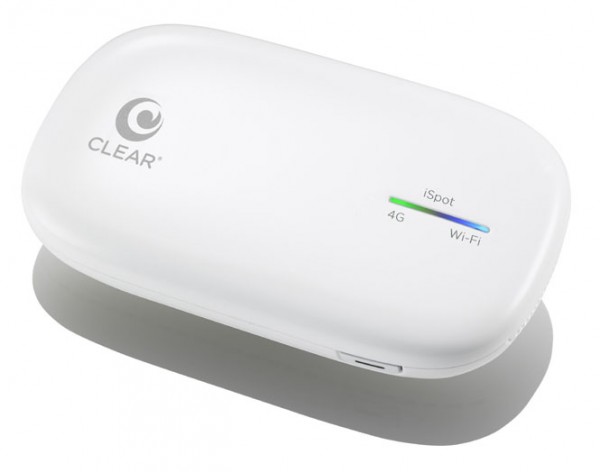
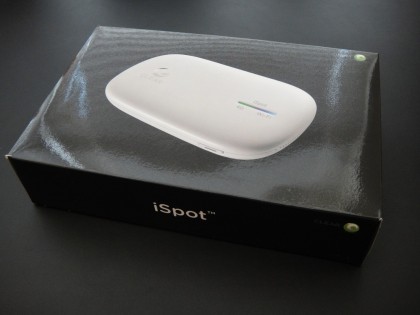

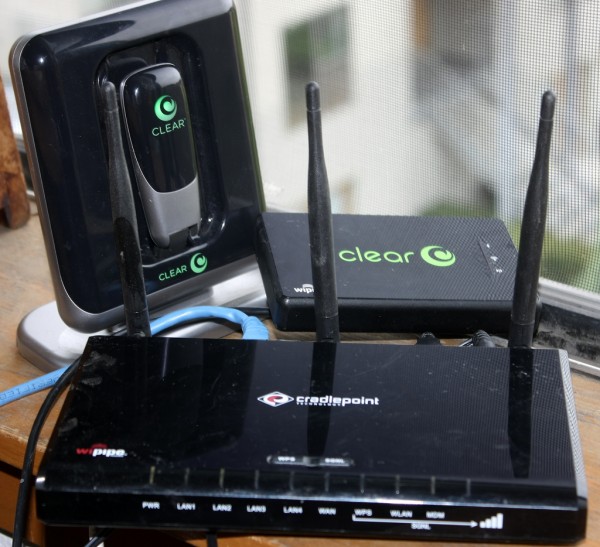
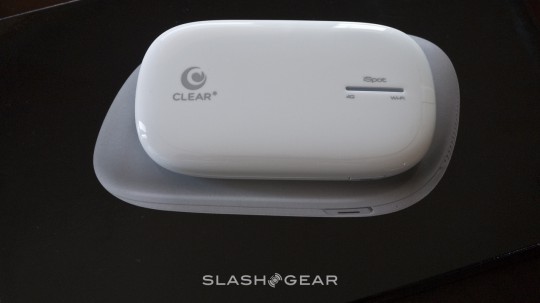

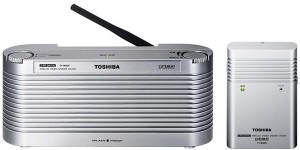
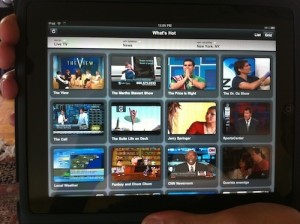
My company, Bill Busters Consulting LLC, has 3 of the 4G+ devices and we love them. I am looking into getting a 4G+ Clear Spot and was glad to find this article. I get 10mbps around town and don’t have to stop at McDonald’s to get online while I’m out, I feel thinner. For more information or to get your Clear device, go to our website to contact us for service in the Tampa Bay and Orlando area for Clear 4G WiMAX service. We also handle T-1, Cable, Fiber Optics, PRI, PBX, TV and 4G.
Pingback: Private Servers